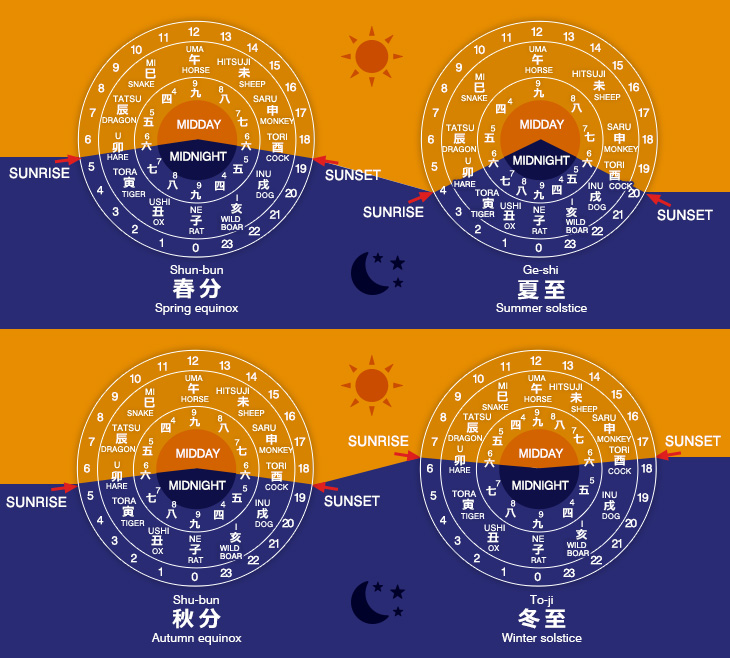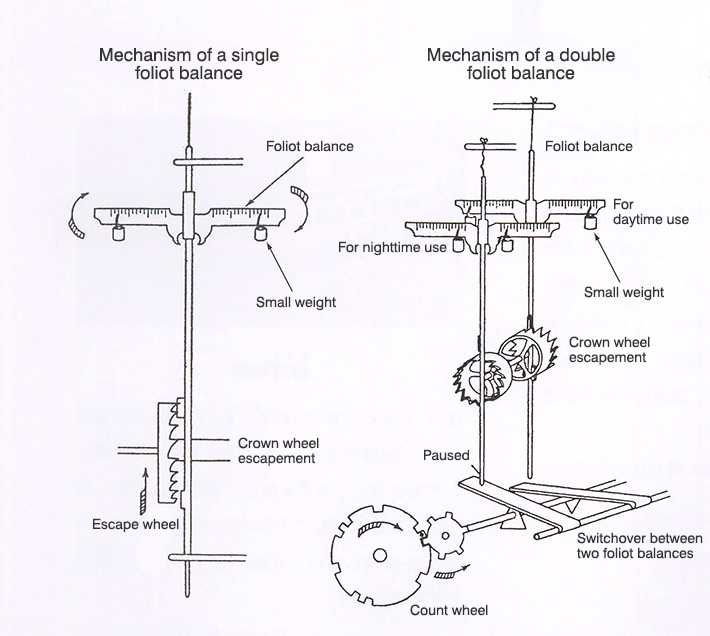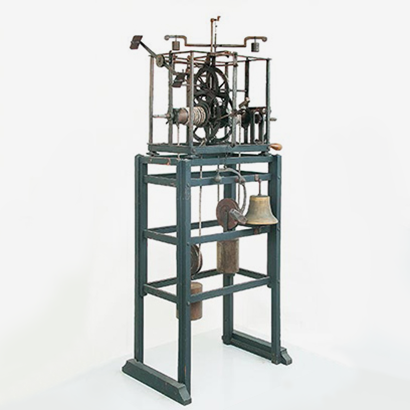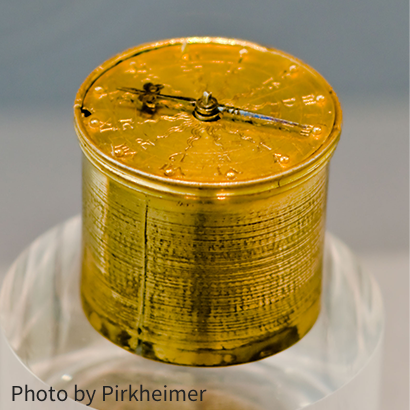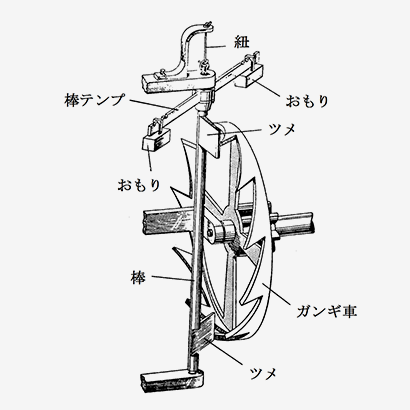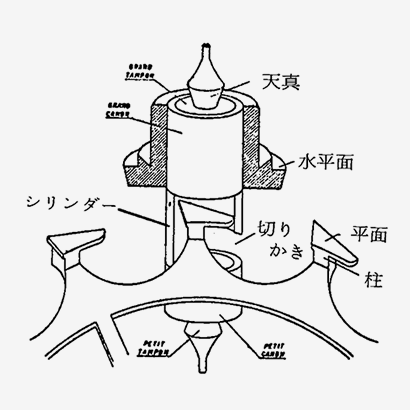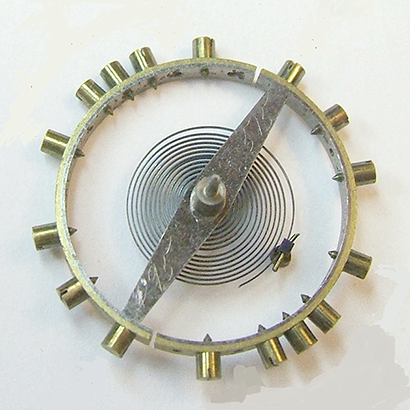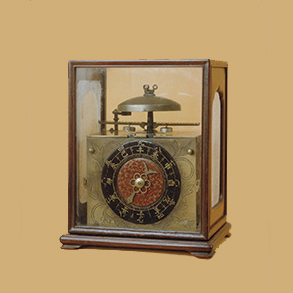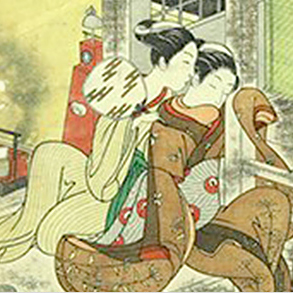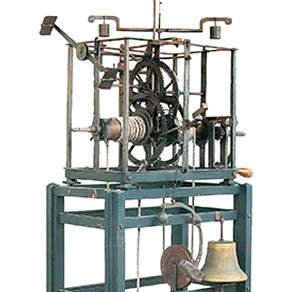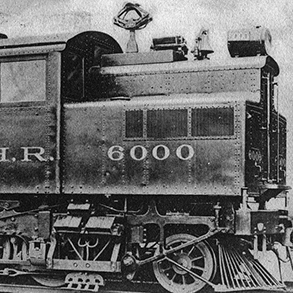Time System in the Edo Period (1603 - 1868)
The length of a single Toki, the partitioned unit of time, changes from day to night, and also from season to season.
The time system that divides the length of a day into equal parts is referred to as the “fixed time system.” The current system with 24 equal parts is now universally adopted throughout the world.
A system that divides a day into day and night and partitions each into equal parts is referred to as a “seasonal time system.”
A seasonal time system was used in Japan during the Edo period. Daytime and nighttime were each divided into six equal parts called “toki .” The toki, the partitioned unit of time, varied in length from season to season in accordance with the changing length of daylight.
To tell the time in words, each of the twelve toki in daytime and nighttime was named after one of the twelve zodiac signs, beginning with the Rat at midnight. According to another method, the hours were counted backwards from midnight, such that both the Rat and Horse coincided with hour number 9 at midday and midnight, respectively. Starting from the Rat as hour number 9, time elapses to Ox (hour number 8) and to Snake (hour number 4), whereupon the counting starts from Horse again from hour number 9.
Since the same numbers appeared in both daytime and nighttime, additional words describing the times of day had to be used (night 9 or day 9, dawn 6 or dusk 6, etc.)
Mechanism of Adjusting the Traditional Japanese Clock
While the clock introduced to Japan in the 16th century was designed to work according to the fixed time system, the traditional Japanese clock incorporated a number of mechanisms to adapt to the seasonal time system.
There were two main methods: 1) Changing the operating speed of the machine and 2) Changing the time intervals on the dial.
1. Changing the Operating Speed of the Machine
The speed control of the traditional Japanese clock used a “foliot balance,” a mechanism of reciprocal motion. The “single foliot balance” clock using the foliot balance controlled the speed of the clock by hanging the weights on the right and left further or closer apart. As mentioned earlier, the length of the partitioned unit of time varied between day and night, which meant that the weights had been transferred twice a day.
A “double foliot balance” clock that automatically switched between daytime and nighttime was developed at the end of the 17th century. This was a welcome invention for clock keepers, as the positions of the weights only had to be transferred 24 times a year to synchronize once for each solar term.
2. Method of Changing time Intervals on the Dial
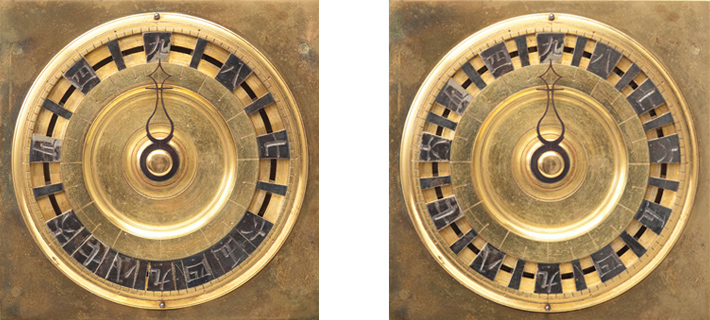
At the end of the Edo period the foliot balance was replaced by a more precise method for regulating the speed, either a pendulum or hairspring. Neither method permitted easy changes to the operating speed, so a segmented dial was produced to change the time graduations. A small panel with 12 characters representing the time was designed to move on a rail as the seasons changed.


